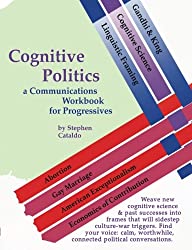(1) What are the policy choices? What are all the different frames you can think of — the different ways to focus on the story — that you hear?
Important: people can usually take either side within a frame:
Take relief => the frame is that taxes are an affliction. "No new taxes" and "The rich should pay more" => both positions treat taxes like an affliction, opposite positions within the same frame.
(2) [usually easy] Which of these frames is more focused on the values you want to emphasize?
(3) Draw a chart. For each frame, write a phrase, slogan or point at a story *for each policy position.*
Grab a piece of paper and sketch out a chart like this example for abortion:
| frame | Affirm that frame | Say "No" to that frame |
|---|---|---|
| Choice | "Women have a right to choose." | No! Abortion is murder |
| Life | Stories of beating hearts; pictures of unborn that look like babies | It's a lump of cells! |
(Extra credit) How is framing going to get you in trouble if you take it too far?
How do you mix framing with active listening and/or compromise, to get make sure your values are heard without running over a conversation partner? Framing is how to be heard — it's not active listening, not how to make compromises; how do you balance these in your social media, in your conversations?
| frame | Affirm that frame | Say "No" to that frame |
|---|---|---|
| focus/frame 1: | ||
| focus/frame 2: |
My Partial Answers Below
The two foci, the two main frames, are something like (1) border security — controlling who gets across, and (2) people – fleeing violence, families are in trouble and need our help. Inside each frame policy can say yes or no, yes or no cross the border, yes or no we hear your pleas and will help.
(3: a secure border ) "We should let anyone seeking asylum across the border." => the frame is "controlling who gets across" which is a conservative frame. To imitate George Lakoff's title "Don't Think of an Elephant," you are saying "Don't think about the controls at the border." And obviously, "secure the border" is the conservative frame and conservative position. (And both "security" and "border" generate powerful metaphoric background imagery — the powerful framing is a reason that a party whose elites happily hire people without green cards is making this a big issue.)
(3: people) Share a story about a person who lived in Honduras, where she grew up, where she went to church, what her job was, how many kids she has — start with her as a person. Then once people know something about her and her family, include the threats she faced. Then the story should engage the question she faced, what were her options. Then, what can we do to help her? This is the progressive frame, about refugees, about people, lives like ours. The normal-time conservative "no" to this frame is either to ignore or de-emphasize the complex realities of individuals and focus on numbers "we can't help everyone," or with Trump to dehumanize them and call them murderers and rapists.
Warning: Frames are just Frames
You can't force people to think of an issue the way you want them to. If someone feels unsafe, and is talking about security, and you ignore them or talk over them — they're just going to feel more insecure, to be pushed further into the "security" frame.
Frames are great for sharing, for when you lead a conversation. Ask questions that get people's focus to the places they haven't paid enough attention, that match your frame, rather than continuously assaulting the other frame. In active listening, and in compromising, it's vital to understand their frame. Know what the frames are, but don't ignore other communication skills.
